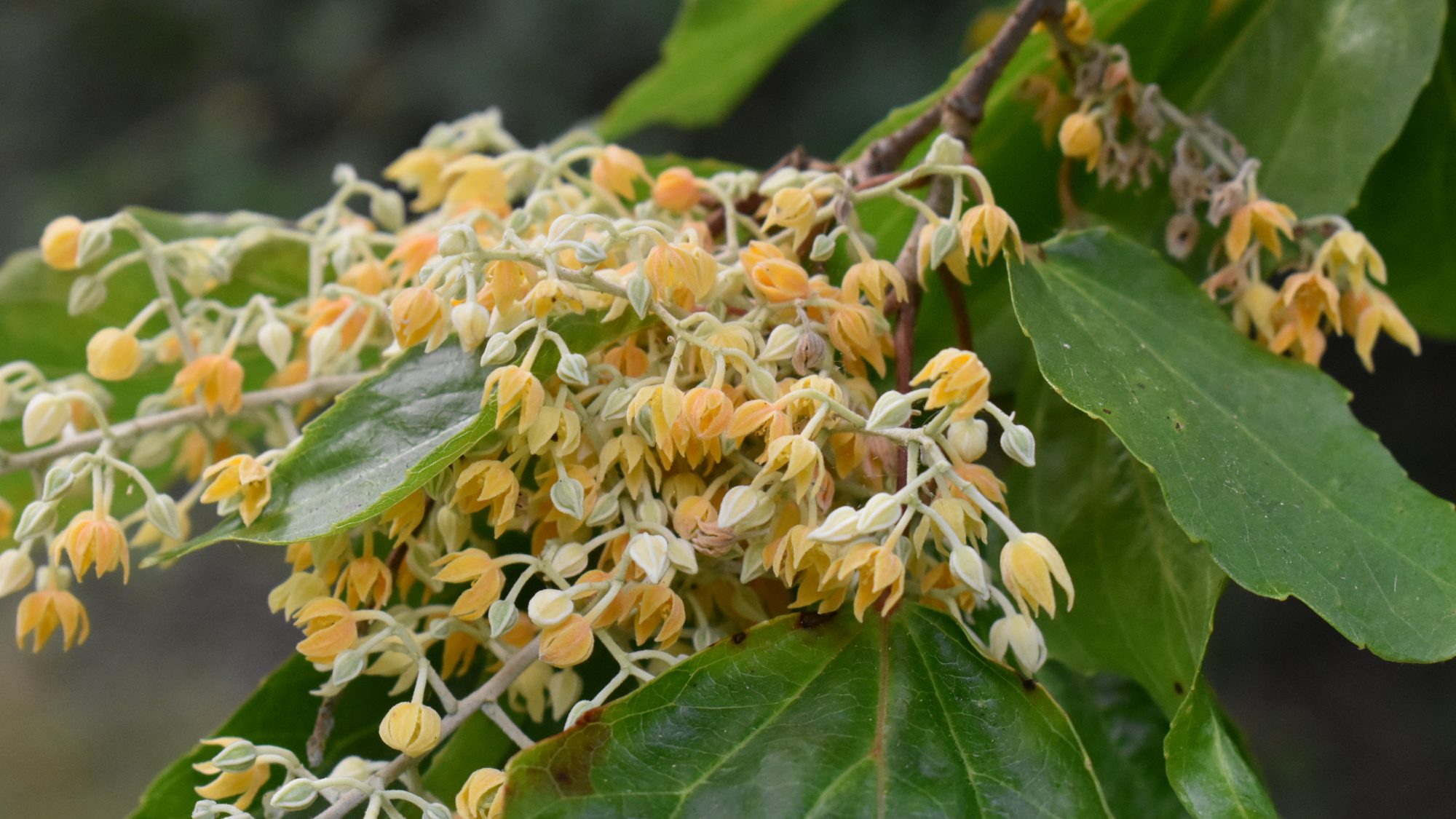Growing in the Gilbert Carter Woodland, this rare tree is full of flower.
A member of the Salicaceae (willow family), the genus Poliothyrsis contains this single species, sinensis. It is a deciduous tree with slender, pointed leaves, which have a glaucous upper surface. In summer it produces a terminal inflorescence of unisexual (male and female) lightly scented flowers approximately 5mm across, and these are initially white, changing to yellow. The common name Chinese pearlbloom refers to the pearl-like appearance of the flowers, which retain their pearl-like shape even when fully open. The generic name polios comes from the Greek for grey, and the specific name from thrysos meaning a panicle, in reference to the whitish panicles of this tree. The fruit is an ellipsoid capsule to 2cm in length, and contains many winged seeds. Poliothyrsis sinensis is a Chinese native, having first been discovered in Hupeh province in 1889 by Augustine Henry, but only introduced to British gardens in 1908 by Ernest Wilson, though it is seldom grown.

